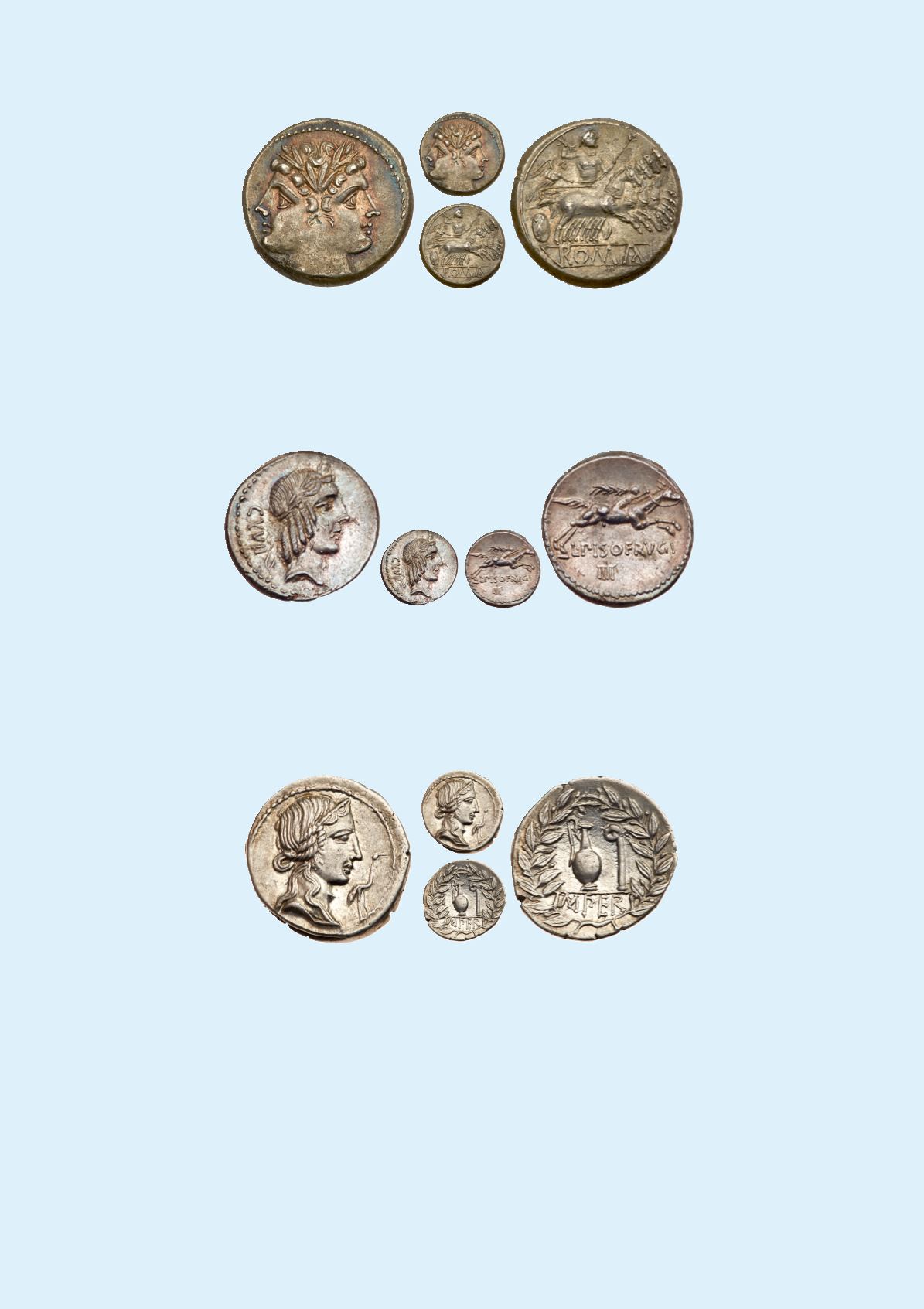

416
Anonymous. Silver Quadrigatus (6.53 g), ca. 225-214 BC. Uncertain mint. Laureate head of Janus. Rev.
ROMA incuse on raised tablet below, Jupiter, hurling thunderbolt and holding scepter, in galloping quad-
riga right driven by Victory. Crawford 28/3; Sydenham 65; RSC 24. Lovely iridescent tone. Superb Ex-
tremely Fine.
$500
From the Dionysus Collection.
417
L. Calpurnius Piso Frugi. Silver Denarius (3.97 g), 90 BC. Rome. Laureate head of Apollo right; behind,
CXVII. Rev. L PISO FRVGI below, horseman riding right, holding palm; below, IIII. Crawford 340/1;
Sydenham 663c; Calpurnia 11. A gem! Lightly toned with underlying luster present. NGC grade MS;
Strike: 5/5, Surface: 5/5.
$600
From the Dr. Patrick Tan Collection
Ex CNG E350 (6 May 2015), 435.
418
Q. Caecilius Metellus Pius. Silver Denarius (3.68 g), 81 BC. Mobile military mint with Sulla’s army in
northern Italy. Diademed head of Pietas right; to right, stork standing right. Rev. IMPER, jug and lituus
within laurel wreath. Crawford 374/2; Sydenham 750; Caecilia 44. Well struck, well centered and lustrous.
Nearly Mint State.
$750
Ex Nomos 5 (25 October 2011), 219;
Ex Exceptional Roman Denarii Coll. #3030.
Q. Caecilius Metellus Pius came from one of the most important and wealthiest families of Rome. Beginning in the 3rd
century BC, his family held numerous consulships, tribunates, censorships and military commands. His father, Q. Cae-
cilius Metellus Numidicus, was the chief commander in the Jugurthine War in Numidia until Marius displaced him,
and was later censor until driven into exile by Marius. The obverse of this coin portrays the goddess Pietas and alludes to
the moneyer’s
cognomen
, Pius. The moneyer acquired the honorable title from the people of Rome, whom he had be-
seeched in order to secure the restoration from exile of his father. The reverse probably refers to an unattested augu-
rate of the moneyer’s father, but may also allude to Sulla’s holding of the augurate in ca. 82 BC (cf. Crawford p. 374).



















